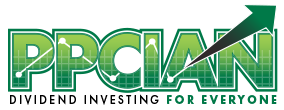Sitting at Starbucks (Nasdaq: SBUX) right now, I’m enjoying a hot chocolate and a chocolate croissant. My creativity and productivity is often higher at Starbucks than in a quiet zone, so I really enjoy powering through work in this amazing environment. Also, I’m a proud shareholder, and enjoy the fact that Starbucks pays a dividend (albeit a small one). This experience cost me $6.00 plus $0.50 tip, for $6.50 total. (Actually, it cost me a little less since I’m in their loyalty program and get free drinks from time-to-time, but let’s ignore that fact for the sake of simplicity.)
Manage Every Single Dollar
$6.50 may not seem like a lot at face value. And, in my opinion, it’s totally worth it for the experience I received. That being said, the best investors and business operators know how to manage every single dollar. They treat experiences like this as a treat, rather than a day-to-day routine. Every last dollar counts, and this $6.50 represents far more underlying value when viewed through the lens of dividends, one of my favorite financial concepts of all time. Today’s post is meant to encourage you and me to ask one simple question before making any purchase, "What if I had to pay for this with dividends? Would I still make the purchase?"
Dividends: The Only True Form of Passive Income
For those new to dividends, they simply represent the company paying a portion of profits back to shareholders. Many large companies, the kinds of companies I like to invest in, pay dividends quarterly.
The best companies have long, consistent track records of growing their dividends, oftentimes for decades upon decades. The best companies keep their payout ratios, the percentage of earnings that are distributed back to shareholders, at reasonable levels so they have a buffer of security (and don’t risk a dividend cut when times get tough and earnings suffer). Dividends, in my opinion, represent perhaps the only true form "passive" income. You don’t have to do anything other than own stock in amazing companies (and keep good records).
SBUX: Every $100 Invested Generates $1.34 Pear Year
Let’s look at Starbucks and their dividend. Currently trading at $59.86 (as of 3/17/16 intraday), Starbucks pays shareholders a quarterly dividend of $0.20 (or $0.80 per year). That’s $0.80 / $59.86 = 1.34% dividend yield. In other words, for every $100 invested, I earn $1.34 in dividends per year.
$485.07: The Real Cost of My Hot Chocolate and Croissant
Now, let’s say I had to pay for my $6.50 snack/meal at Starbucks out of dividends. I would have to own $485.07 worth of Starbucks stock at 1.34% yield to pay for my single Starbucks experience ($485.07 * 1.34% = $6.50). Now, let’s say I went to Starbucks every single day of the year (like some people do). $6.50 * 365 = $2,372.50. In order to pay for this expense with Starbucks dividends, I’d need to own $177,052.24 worth of Starbucks stock at 1.34% yield ($177,052.24 * 1.34% = $2,372.50).
To be fair, Starbucks does increase their dividend each and every year. In the last five years, for example, Starbucks dividend has increased by 108%. So, if I wanted to invest in Starbucks stock now, hold for five years, and then enjoy my $6.50 experience daily five years from now, I’d "only" need to invest $85,121.15 right now (assuming rate of dividend increase stays similar).
How Much Would You Have To Invest To Make That Purchase?
I’m not saying to avoid Starbucks here. I’m not saying to pinch every penny. I am saying to be conscious of every single business and personal expense. Whenever you make any purchase in business and life, mentally consider if you’d still make the purchase if you had to pay for it via dividends. Think about how much money you’d have to invest and how hard you’d have to work to save that capital before making your purchase.
You Are A Business, You Have A Market Capitalization Just Like SBUX
At the end of the day, you are a business. You are no different than Starbucks. If you can eliminate expenses from your life, your personal market capitalization increases. Remember from my recent post about Your Margin Is Made On The Margin, that margin is leverage. If you increase your margin (your profit) just a little bit, your market capitalization (or value) could skyrocket. This rule applies to businesses and people. Manage your own life as if you are a business. Whether the expense is small or large, all savings matter and create leveraged value. Dividends provide an amazing lens illustrating why margin creates so much value.
Reinvest Your Savings In Dividend-Paying Stocks
I’d like to close bringing this discussion full circle. When you start saving money, what will you do with your extra cash? You may want to consider investing in dividend-paying stocks, especially those that have a consistent track record of increasing dividends (safely) year in and year out.
Use your savings to start generating even more income, in a passive fashion, which will compound and snowball over time. You’re at the tipping point when your dividends become considerable, perhaps covering a big portion of your expenses (or even all of them). Add that dividend income with your own earned margin, and your own market capitalization will skyrocket.
My winning strategy:
- View all expenses through the lens of dividends. Would I still make that purchase if I had to pay for it via dividends? Leverage this concept to be considerate and frugal.
- Reinvest my savings in dividend-paying stocks, those that are safe and increase dividends over time.
- Reach the inflection point where my dividend income snowballs and I’m able to fund significant life expenses via passive dividend income. Maintain my conservative financial ways and dividends could cover all expenses one day.
Disclaimer: Long SBUX. This blog post is just for entertainment. I’m not a financial advisor, and this is not investment advice.
Images of tree and golden leaves © PPCIan.com


